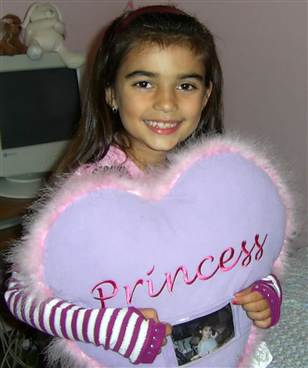Tiny tattoos could help diabetics ditch needles
`
New sensor acts like a mood ring for glucose levels in mouse experiments
`

Balobeck family photo
Eight-year-old Julia Balobeck needs to prick her fingers so many times each day that the tips of her digits have started to turn numb and black. Even at her age, she understands that the needle sticks are crucial to keep track of her blood sugar levels and manage her Type 1 diabetes, but she’d really like someone to find a better way.
Help may be on its way for Balobeck and other diabetics who must jab themselves as many as 10 times each day to get that critical drop of blood that will reveal glucose levels and indicate whether a shot of insulin is needed.
Scientists are starting to test a kind of sensor that changes color with rising blood sugar levels. The high-tech tattoo, which is about the size of the clicker on the end of a ballpoint pen, is made up of tiny spheres that are injected into the outermost layer of skin. These nanospheres contain a special kind of ink that reacts with glucose, explains the tattoo’s inventor, Heather Clark, a biomedical engineer at Draper Laboratory in Cambridge, Mass.
Although the tattoo hasn’t yet been tested in humans, the early results in mice have been very promising, Clark says.
The new sensor may be more like a mood ring than a tattoo since it reflects changes in a person’s skin. As it turns out, when blood sugar levels rise, glucose levels increase everywhere else in the body, from the eyes, to the kidneys ”” even to the outermost layer of the skin.
Each tattoo sensor is made up of millions of tiny rubbery beads that can be injected into the skin like the dye that makes up a regular tattoo. The beads are so small that 600 of them placed end to end could fit across the diameter of a hair.
The tiny beads are infused with two substances. One is a molecule that can pull glucose into the sphere and bind to it. The other is a special fluorescent dye. With no sugar present, the two molecules bind to each other and turn the sphere yellow. When sugar levels rise in the skin, molecules with glucose attached jettison the dye and the sphere turns purple.

